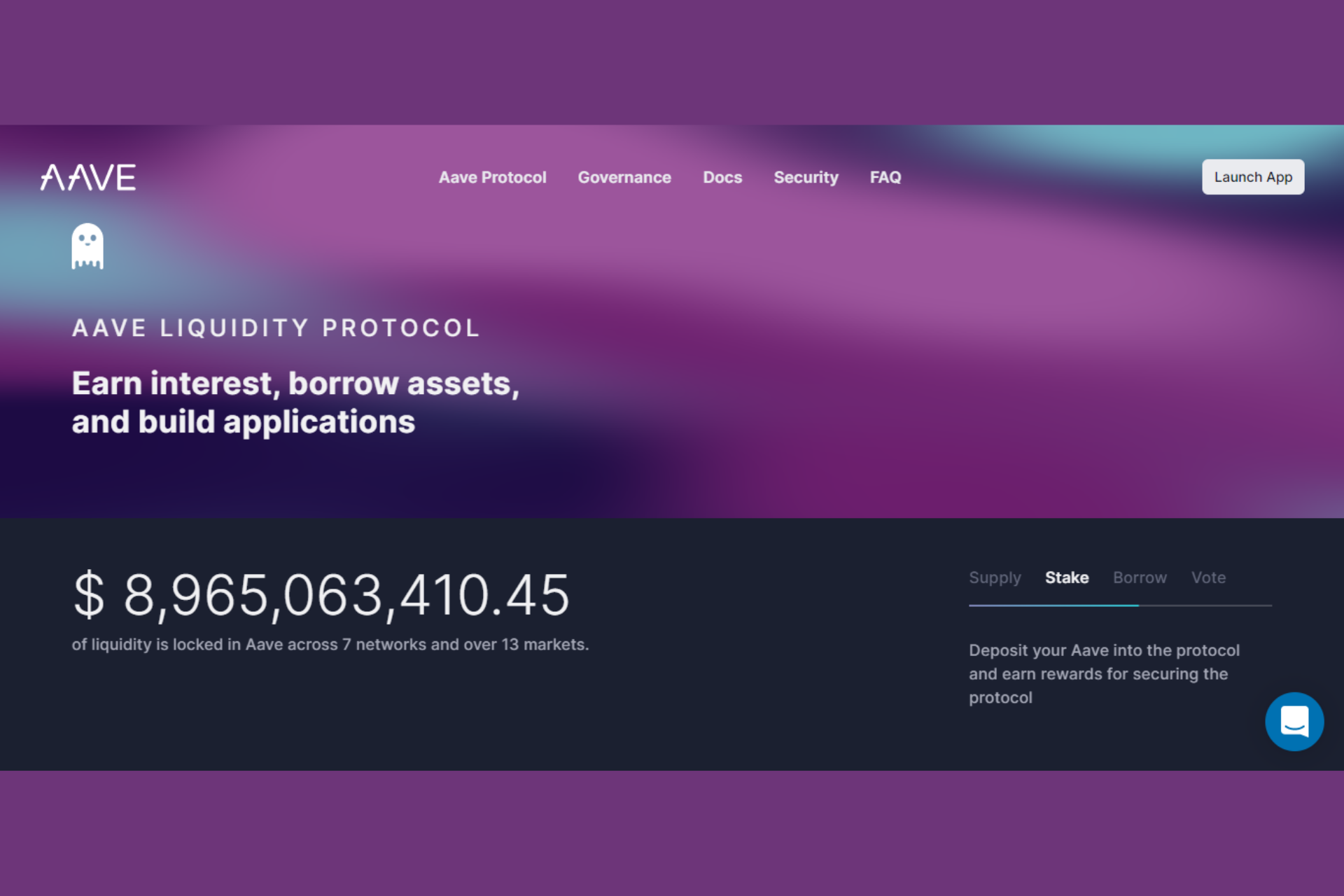What is Aave? Everything to Know About This Defi Lending Protocol
Aave is blockchain-based lending and borrowing replacement for the traditional borrowing and lending industry. Users must sign many documents when applying for a bank or financial institution loan. Furthermore, when applying for a loan from a traditional institution, they must show some assets as collateral.
Their application may be denied even if they have a good credit score. Aave’s platform allows anyone to lend and borrow money.
What is Aave?
Aave, formerly ETHLend, is an Ethereum-based protocol designed to assist individuals and businesses who want to lend or borrow money in a decentralized environment.

Lenders can earn a reward by locking their cryptocurrencies into liquidity pools, whereas borrowers can borrow stablecoins and other cryptos by locking a certain quantity of crypto tokens as collateral.
Aave token holders, liquidity providers, Aave protocol, programmers, and Defi wallet partners comprise the Aave network. The Aave network is intended to boost the flow of capital within the Defi ecosystem.
aTokens
When a user deposits crypto on the platform, aTokens are created. Users can finish the payment process using these tokens without worrying about gas approvals. When the user gets the deposited amount, these tokens are burned.
Credit delegation
Aave has established a Credit Delegation vault in which depositors could lock their crypto tokens to earn additional funds. To delegate the credit line to someone they trust, they must sign a contract on the OpenLaw application. As a result, they can earn interest on their investment without directly borrowing.
Trading capabilities
Liquid providers can increase their investment by taking short and long-leveraged positions. Similarly, users can gain access to margin trading through collateralized assets.
Switching rates
Borrowers can choose between fixed and variable interest rates to avoid interest rate volatility.
Governance
Holders of Aave tokens can participate in decision-making by delegating their voting power to other addresses.
Aave History
Stani Kulechov founded Aave in 2017. Kulechov began working on the project while studying in Helsinki. Kulechov noticed a lack of credit applications on ETH and decided to start a project allowing borrowing and lending without involving centralized authorities.
During an initial coin offering in 2017, the company raised approximately $16.2 million by selling 1 billion tokens. It was first introduced as ETHLend before being officially called Aave in September 2018. LEND holders receive one Aave token for every 100 LEND tokens they own. As a result, the supply of Aave tokens has been reduced to 16 million.
The company released Aave 2.0, which includes new features such as liquidity mining, gas optimization, and credit delegation.
How Does Aave Work?
Aave allows users to earn from their cryptocurrency holdings by depositing them into liquidity pools. Rather than connecting lenders and borrowers, the Aave method releases loans using an advanced algorithm.
Interest rates are determined based on demand and supply. If the assets in a liquidity pool decline, the network will increase the interest rate so that lenders can add more tokens to the pool. Similarly, interest rates are reduced when all of the assets in the pool are not used.
Borrowers must deposit additional tokens as collateral when borrowing from the network. The network may use the collateral to restore the interest amount and loan if the user does not return the loan within the specified timeframe. It also aids in the management of the cryptocurrency market’s volatility.
Lending
Aave has established liquidity pools on Balancer and Uniswap, where lenders can deposit tokens in exchange for interest. These platforms allow lenders to redeem their funds quickly.
Borrowing
When borrowing from the platform, borrowers must secure 50%-75% more tokens as collateral. The collateralized assets are automatically liquidated if the borrower fails to keep the collateralization ratio.
aTokens
The network distributes an equal number of aTokens based on the number of crypto tokens deposited by the borrower or lender. Users can freely trade and transfer these tokens. As a result, they can gain access to a diverse range of crypto within the network without having to own them.
Loans in a Hurry
Users can obtain flash loans in as little as 13 seconds. These loans should be repaid in a single ETH transaction. For these loans, users must pay a 0.09% fee. Flash loans can be used for self-liquidation, arbitrage, collateral swapping, trading profit generation, and loan refinancing.
Aave Tokenomics
Aave is the Aave platform’s native token which can be used for various purposes. It has a market cap of $1.23 billion and a circulating supply of 14 billion tokens. It is one of the top 50 cryptocurrencies in terms of market capitalization. It has a total supply of 16 billion tokens that will be distributed over time.
Why Would You Need to Borrow Cryptocurrencies?
Holders of crypto-tokens can use the tokens they have borrowed for arbitrage. They can buy them at a lower price from one exchange and sell them at a higher price on another exchange where the token is trading.
Most users require a large amount of cryptocurrency for this procedure because the differences are usually minor. Similarly, users can use borrowed tokens to purchase additional amounts of cryptocurrencies. They can also repay the loan after selling the extra tokens at a higher price.
Conclusion
Aave is a blockchain-based lending platform that allows people to borrow and lend money without dealing with a centralized authority. It removes several constraints from the traditional lending industry. However, over-collateralization is a significant problem that prevents most people from utilizing this platform. Don’t hesitate to contact us if you require additional information about how Aave works.




